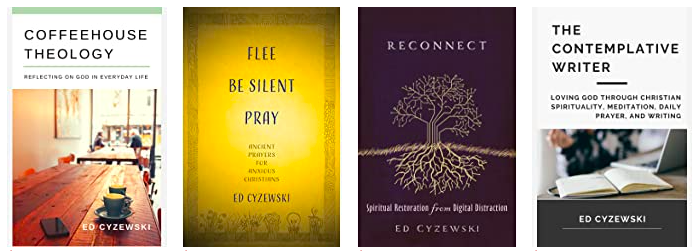The following sermon was shared on June 19, 2022 at St. John’s Episcopal Church in Murray, KY on Luke 8:26-39.
I have a confession to make to you. It’s not scandalous, but it’s the sort of thing that some may be ashamed to admit.
I assure you, I’m not ashamed in the least, even if some certainly would be.
Here it is: I’m a sucker for catch-phrase comedy. I can’t get enough of those predictable one-liners in comedy shows.
There are Arrested Development’s gold standards:
“I’ve made a teeny, tiny HUGE mistake.” And “There’s always money in the banana stand!”
There’s the catch-phrase parody from the more obscure Rickey Gervais comedy series Extras:
“Are you having a laugh?”
In dating myself a good bit, one of the best-known catch-phrase comedy one-liners from my childhood belongs to Saturday Night Live’s Church Lady skit where the church lady piously highlighted a quote, unquote “scandal” and then remarked with a smirk:
“Could it be… Satan?”
That parody of Christians highlights one of our culture’s two extremes regarding spiritual, especially demonic matters.
On the one hand, there are the Christians like the Church Lady who find Satan’s fingerprints on every temptation, trial, or setback.
Others deny any possibility of Satan’s influence in the world and tend to explain away demon possession in the Bible as misdiagnosed mental illness. Some commentary writers even go in this direction.
There are a lot of things in today’s reading that can make us uncomfortable, and perhaps demon possession is but one of several things on that list.
We can also talk about racism and nationalism, as well as valuing financial security more than people and God. We’ll get to them in a minute, but since this story hinges on what happens to a demon-possessed man, let’s talk about demon possession for a moment.
In a church like this, some of us likely grew up hearing a lot about demons, the devil’s schemes, influence, and even a hockey team called The New Jersey Devils. The devil came up a lot for us, and it’s safe to say that many of the actions, motives, and disruptions that Christians blamed on the devil or demons were more likely the result of living in a world where people have free will, people hurt each other, and sometimes bad things just happen.
It’s also likely that some of us grew up not hearing much about demons and the devil, or because we grew up hearing so many questionable assertions about them, we’ve started ignoring them. Must we think about demons and spiritual battles?
Because Jesus shows up in this land where he was not welcome to solve a problem that no one wanted to deal with, we must show up as well.
Here’s the thing about Jesus’ spiritual battles with demons in the Bible: we know them when we see them. Sure, we could come up with more scientifically palatable explanations for these passages, but today’s reading makes that feel like a stretch.
Maybe there are some occasions when someone comes under the influence of a demonic spirit, and the power of Jesus is required to intervene for their liberty.
A story from my college years comes to mind. During my Junior year at a Christian University, I served as a Discipleship Coordinator (or DC), organizing small groups and prayer meetings on my floor.
One of my fellow DC’s, I’ll call her Sonya, probably one of the most respected leaders among us, shared her testimony during one of our retreats, and it went in a direction that no one expected. A year or so back, Sonya had been hanging out with some of her friends and was in a terrible, angry mood.
As she grew more belligerent and confrontational with her friends, one guy, who had no experience with such things, sensed something terribly wrong with Sonya. He prayed for her, and at one point, he prayed in the name of Jesus for an evil spirit to leave her.
Now, this is when things get crazy.
Sonya says that this voice came from her that wasn’t her own. It was an incredibly loud, terrifying bellowing and screaming that went on for far too long. Her friends continued to pray for her, and eventually, she stopped screaming and felt at peace.
There is a world of difference between a situation like that and the person who attributes a personal difficulty to the devil or a pop culture song to “demonic influence.” Just as Sonya’s friend, who knew nothing of demon possession, recognized something wasn’t right and required prayer, Jesus could see that there was something in this Gerasene outcast that required his intervention.
More importantly for us, it’s striking to see just how terrified the demons were of Jesus. Even when just about everyone doubted Jesus, the demons correctly identified him as God’s Son! They expected to be tormented by him.
How odd it is that even though these demons tormented this man, Jesus didn’t torture the demons as they’d expected. I don’t know how they thought it would help them to relocate into a herd of pigs and jump off a cliff, but Jesus let them pick their poison. It’s a puzzling detail that only drives home just how unequal the demons are to Jesus.
They are the ones begging his permission to act. It’s not even a remotely close confrontation.
Shortly after the demons sent the pigs over the cliff, the man appears restored to his right mind, gets dressed, and quietly sits at the feet of Jesus. Maybe everything will be great now that Jesus has solved this big problem!
Unfortunately, by solving one problem, Jesus created another for the people in the Gerasenes region. It turned out that having the power to heal a man and kill a herd of pigs simultaneously makes you unpopular. Killing the pigs more or less canceled out the good deed for the people in this town.
The people had already written off this man. He was a problem they were only too willing to ignore. Sure, he posed a threat, but he wasn’t going around killing entire herds of pigs.
These weren’t pet pigs rented out for church events. They were a source of financial security for someone. They were putting food on the table. We may even imagine that the loss of this herd could have been a significant economic catastrophe for someone. It could be the equivalent of casting out a demon today, but then the demon sets someone’s small business on fire.
Time and time again, Jesus drives a wedge between us and our possessions and finances. He forces us to consider whether we value other people, even those who appear to be a beyond hope. Would we want Jesus to stick around if he set us back financially to the same extent while helping someone?
That’s an element to this story that haunts me perhaps even more than the demonic aspect.
And then, there are the racial and national elements to this story. Jesus was a Jew who considered pigs unclean. He landed in a Gentile area. So it’s not hard to imagine these Gentiles thinking, “Well, of course, this Jewish miracle worker will kill our pigs! What else will he take from us? He must hate our way of life.”
The fear generated through racism and nationalism that obscures the humanity of others poisons our ability to love. This was a highly charged racial and national moment. Just a few generations before this event, Greek rulers in Israel had banned worship at the temple and even killed many Jews who continued to follow their customs and laws. No love was lost between the Jewish people and their Greek neighbors in a Gentile region like this.
The Gerasenes likely rejected Jesus partly because they couldn’t help interpreting his actions through the limits of their racial and nationalist lenses.
Even the liberated man’s fate may hinge partly on the racial and nationalist elements in this story. This man had lived among tombs in a Gentile region with pigs all over the place. Those would have been three strikes against him, to say nothing of him being possessed by a demon. So, that’s four strikes.
This man had the perfect resume if you wanted to make someone appear cursed and unreliable to Jewish people. I wonder if Jesus expected the Jewish people to reject his testimony. No one in Israel, where Jesus planned to minister, would know if his story checked out. Could they trust him?
Yet, among this man’s Gerasene people, they could verify who he was. They had seen him and heard the stories from people they trusted. Even if some had lost a great deal financially and entertained suspicions of a Jewish miracle worker, no one could deny that this man had experienced a great miracle.
His testimony counted for something among his people as he gave glory to God and credited Jesus with his miracle. To the man’s credit, he obeyed Jesus, turning his story of trauma, pain, and rejection into a testimony of healing and restoration.
While God does not cause our pain and suffering, I have seen time and time again how those healed by God in a specific area of their lives have served others in meaningful ways by sharing their healing journeys with others.
In closing, this Gospel reading challenges us to consider our attachment to the status quo, financial security, and the convenience of ignoring the big problems around us. We can look at suffering people and ask what keeps us from showing compassion to them or believing that we can share spiritual or material relief with them.
It’s also noteworthy that today is June 19th, which is known as Juneteenth in America and is now a Federal holiday. It was the day in 1865 when word reached the enslaved people of Galveston, Texas, that the Civil War was over and slavery was abolished.
Even in a pervasively Christian region, enslavers turned away from the inconvenient prospect of emancipation. They put liberation off until Federal representatives and soldiers made reality beyond dispute.
Educators Opal Lee and DeForest Soaries write about Juneteenth in the Washington Post:
“From the start, this holiday inspired Black Americans to celebrate overcoming the injustices of the past and take steps to pursue a more just future. And if our national history proves anything, it’s this: The more people who get involved in that work, the faster and better it goes. Just look at the civil rights movement, which inspired and then transformed our nation.”
It’s always been tempting to turn a blind eye to the suffering around us and to avoid the hard work of liberation.
As we sit here and imagine ourselves sitting next to Jesus as he pulls away from the shores of the Gerasenes, I have a few questions for us to ponder. I encourage you to meditate on the one that speaks most directly to your heart:
What is Jesus telling us to stop ignoring today?
Where have our priorities distracted us from what Jesus would have us do?
How can we seek God’s healing in an area of hopelessness?
How could the undisputed power of Jesus over evil spirits give us greater peace and confidence?
These are just a few of the challenging questions today’s reading prompts. If reflecting on them leaves us feeling challenged or even uncomfortable, then we have likely given God’s Spirit something extremely useful in our lives that can also bring many blessings to others.
Amen.
I’m the author of Flee, Be Silent, Pray: Ancient Prayers for Anxious Christians, Reconnect: Spiritual Restoration from Digital Distraction, and other books. I write about prayer and spiritual restoration at
http://www.edcyzewski.com.
Learn More about Ed’s Books












